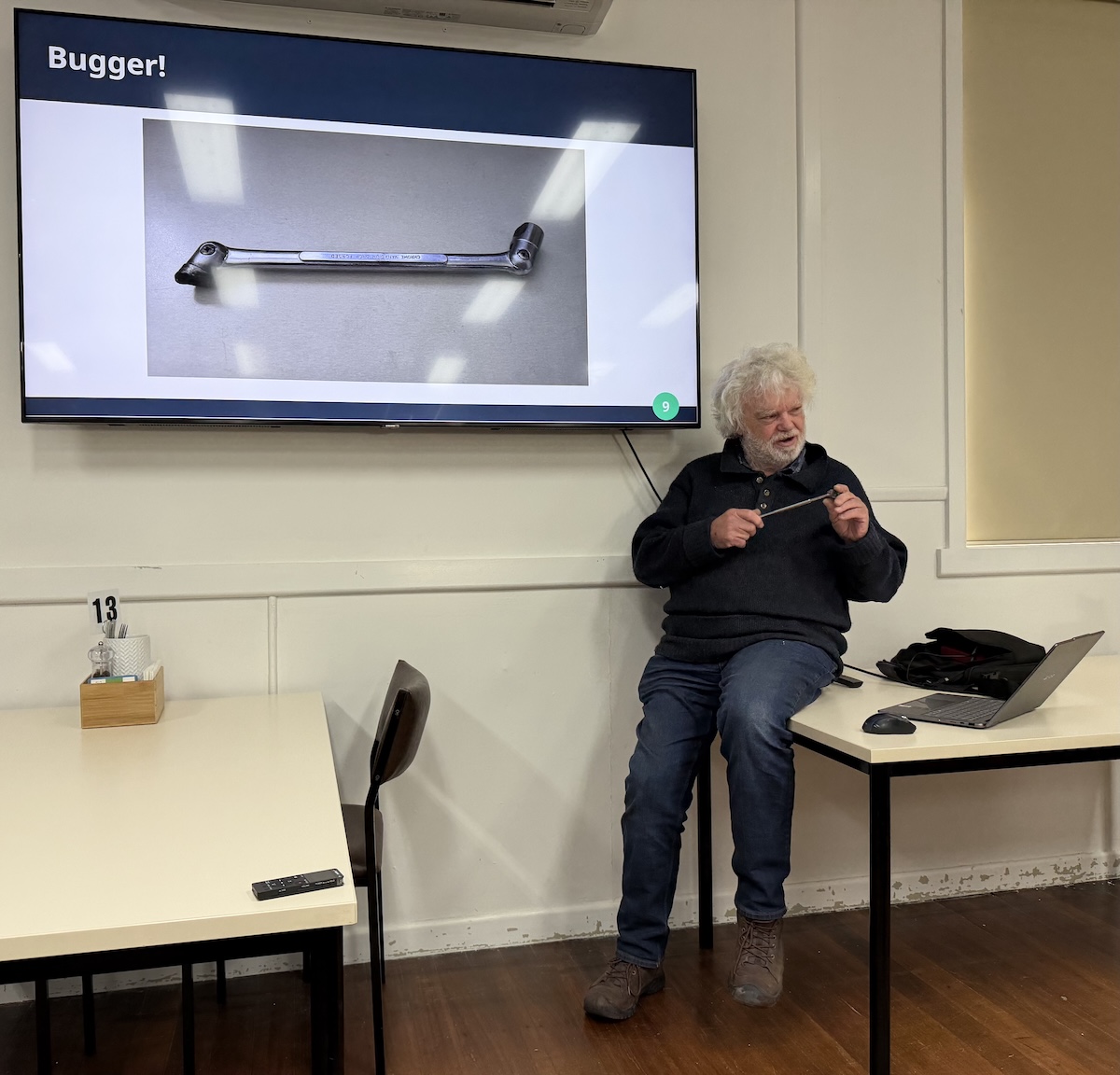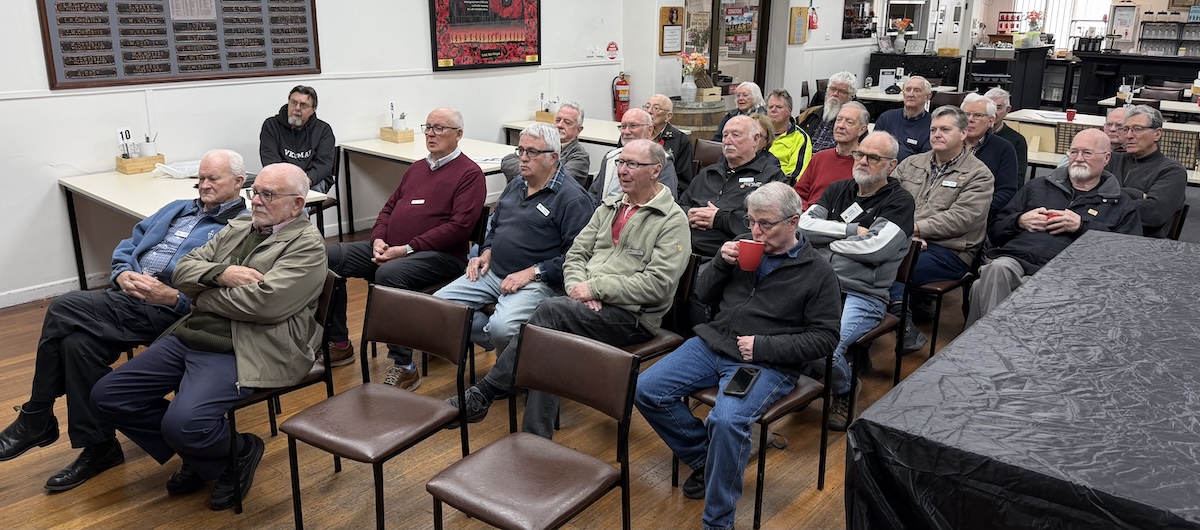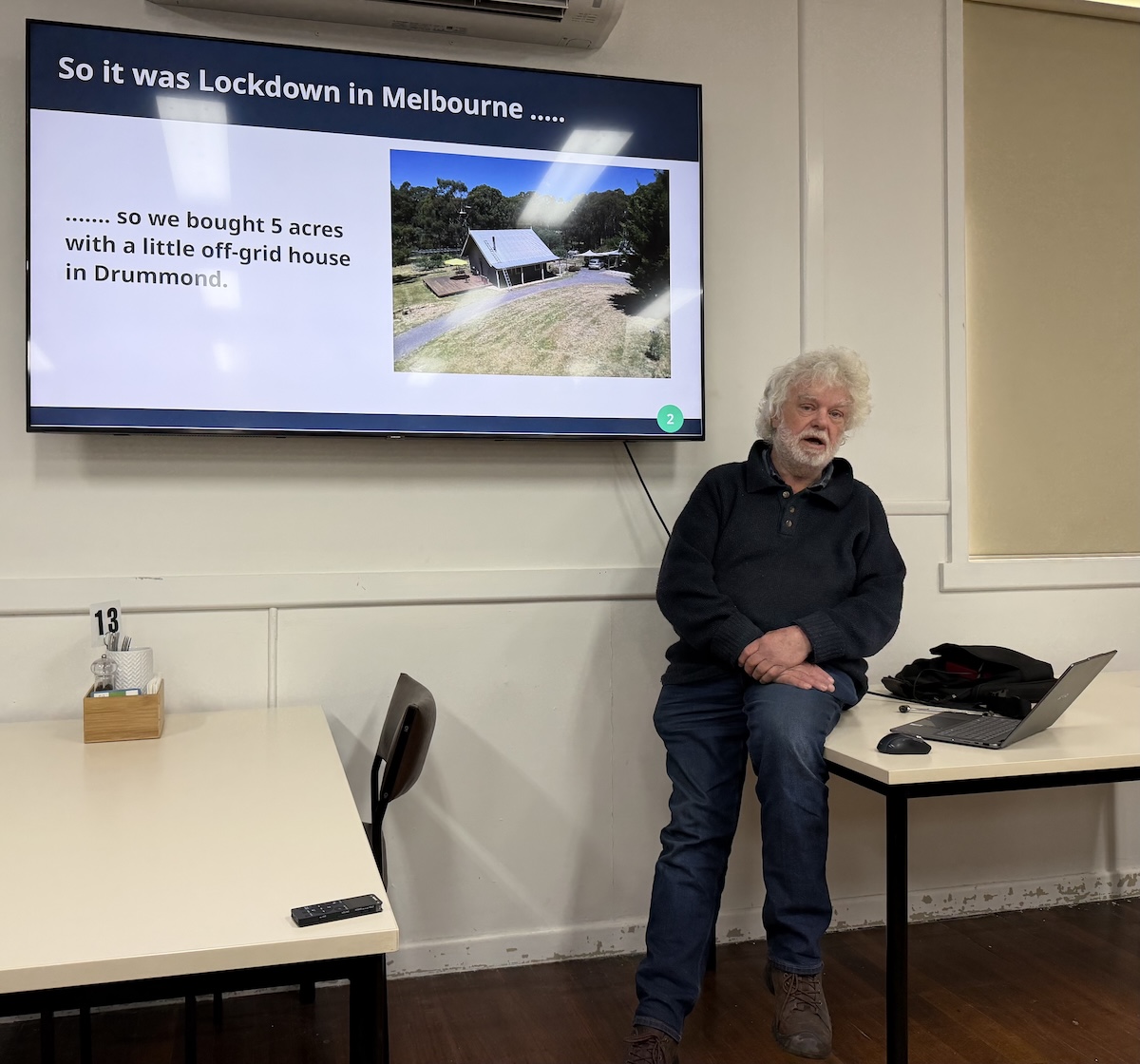The main presentation at the September meeting at Woodend was a fascinating talk on setting up power for an off-grid home and reducing the interference to
HF ham radio operation by Richard, VK3LRJ.
Richard and his partner purchased a small house on a five acre block at Drummond. There is no mains power (or water, or gas, and not much internet).
The previous owner had worked for Telstra and had built a small but ingenious solar system using lead-acid batteries.
There were panels that moved to follow the sun – something that no longer makes sense due to the low price of panels today. The cabling included lengths repurposed extension leads, used for DC, probably faily lossy. The batteries had a capacity of about 10KWHr. Panels were of different voltages and used diodes to prevent
reverse charging.
It worked, not terribly efficiently, but it worked. He also ran a gas fridge and stove.
Richard decided to upgrade all of this. He added more panels, 12 new 370W to replace the old ones. He also scrounged 8 second-hand panels and some data centre UPS batteries for almost nothing. This took storage up to 60KWHr. The existing Selectronic inverter, made in Melbourne was reused = a beautiful piece of engineering.
It was reasonably quiet, delivering 3.5 kilowatts constant, 5 kilowatts for half an hour and 10 kilowatts for 30 seconds I think, or a minute something like that.
Additional battery capacity was added, but this was less successful after learning that UPS batteries selected have different characteristics to deep cycle batteries in that they are designed to float, handle an outage, and be replaced unlike deep cycle which expect a daily charge and discharge cycle.
A pair of Victron MPPT charge controllers was installed which is more efficient than the old PWM units. Also it provides excellent reporting via bluetooth to a phone.
Richard also runs an open source version of Victron’s software on a Raspberry Pi for further data on the system which allows real time tracking of voltages from the cloud wherever he is.
It was during one upgrade that a bit of an event occurred …

“Somehow I bumped a socket wrench off the bench while the plastic battery covers were removed. It fell neatly across a pair of battery terminals, blowing the top out of one of the batteries, melting the terminals, and welding itself onto the battery terminals. Fortunately he was able to hit it with a close-to-hand hammer, since it was by now beginning to glow red. It flew across the other side of the room. The battery didn’t really recover”.

So, I thought, “what do I do, what do I do, what do I do?” It just happened that there was a deal on a Lithium battery system to replace the lead-acid.
“What a transformation that was” The new lithium cells had a much lower internal resistance than old lead acid so charged a lot faster. (They will also blow up better too). Although the new system has a lower absolute capacity than the original it, in fact, is capable of much more power due to being able to discharge much further.
Everything was “hunk-dory” until the HF radio was turned on. Noise floor was about S10.
Contacting the inverter manufacturer led to the knowledge that the noise filter capacitors on the output degrade over time and this unit is probably more than ten years old. Richard replaced the capacitors and noise was reduced – but not enough.
The antenna system was a multi-band fan dipole over the building. One day it blew down and became a rather tangled mess.
This was the excuse to try an end-fed with an unun and a capacitor in line to help with matching on higher bands.
Being further from the noise sources, this new antenna not only transmits well but picks up less noise.
There was another source of noise to be tracked down and it turned out to be an unterminated telephone line that ran in to the property. Clipping this at the street cleaned this up.
The shack is heated with a diesel heater which is not only low noise but also and excellent and cheap to run appliance.

